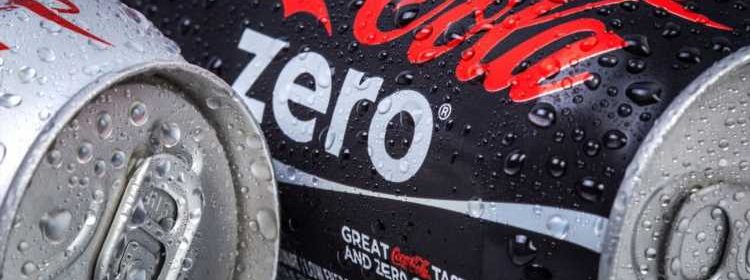The Difference Between Diet And Coke Zero Is Due To One Key Chemical

If you dabble in the occasional soft drink, you’ll know that when it comes to Diet and Coke Zero, the taste is not equal. It’s for this reason that people pledge their loyalty to one or the other, and to order the wrong beverage is to find yourself disgruntled and going thirsty: it won’t be done. Ask anyone who enjoys sipping on Coca-Cola’s low-cal brands and they’ll rattle off the reasons their choice of drink is superior. Some remain adamant that Coke Zero is smoother on the palette, more creamy, gliding on the tongue in only the tastiest of ways. But then there are those who remain loyal to Diet Coke, saying it’s more fizzy and somewhat more acidic.
As it turns out, there is a real difference between the two drinks. Even in taste, Diet Coke has a taste profile all of its own, while Coke Zero is apparently meant to taste like ‘Fat Coke’. This is due to a single chemical, with coke zero featuring sodium citrate in its ingredients list, while Diet Coke has citric acid.
Why We Should Start Taxing Sugary Soft Drinks In Australia
Drinking This Just Twice A Week Will Increase Your Risk of Diabetes, Heart Disease And Stroke
Diet Coke was introduced to the market in 1983, becoming the company’s first sugar free soft cola. Coca-Cola Zero then came out in 2006, before being phased out and replaced with Coca-Cola No Sugar. On the website, the brand explains the difference between the two beverages, and while they admit that both drinks are sugar free and calorie free, “Coca-Cola No Sugar looks and tastes more like Coca-Cola Classic, while Diet Coke has a different blend of flavours which gives it a lighter taste.”
Coke Zero contains the ingredients water, colour (caramel E150d), phosphoric acid, sweeteners (aspartame, acesulfame K), natural flavourings including caffeine, acidity regulator (sodium citrate). Meanwhile Diet Coke contains the ingredients carbonated water, colour (caramel E150d), sweeteners (aspartame, acesulfame K), natural flavourings including caffeine, phosphoric acid, citric acid.
It makes complete sense, especially for those who know the two products well and certainly goes a long way to explaining the flavour profiles of both beverages and why they differ so drastically.
Source: Read Full Article

